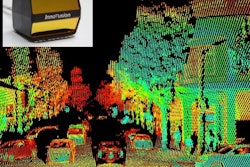
responses submitted by Steve Ehrsam, VP Marketing and Sales, Innovusion
Automation & Smart Systems
What are customers/the industry looking for in smart systems, and how is your company going about providing those features?
Innovusion’s dual spinning mirror’s approach to LiDAR addresses several “heavy-duty” market applications including:
- trucks/buses
- construction/agriculture and mining equipment
- trains
- and "V-2-X systems" (i.e. vehicle to a central location).
How do you see smart systems continuing to impact the industry, and what new benefits will they bring?
Smart systems are getting “smarter” i.e. able to provide more and better data because of hardware and software that comprise the total system. We have configured our Innovusion LiDAR systems to provide picture-like images which result in maximizing the safety for the operator and the working environment, including personnel, around the vehicle. As safety levels increase, technology matures, prices drop…so will the adoption rate. In addition, new levels of efficiency will be achieved by the OEM users due to the creation of automated procedures which will decrease operating costs while simultaneously increasing performance and safety.
What, if any, new opportunities is your company seeing in regards to creating automated systems as the technologies which enable them continue to advance?
Specific to our clients in the mining and construction areas, we see the major benefit to be the reducing of human involvement/interaction that tend to be extremely dangerous by their basic nature in addition to their remote locations. Additionally, we see there to be a major and ongoing problem involved with the difficulty in hiring qualified, professional and experienced operators to be a major driving force behind the need for more vehicle autonomy in this space. This is especially true in the agriculture business and expected to increase in severity as a result of potential legislation and the resulting significant decrease of migrant worker availability.
What challenges are there yet to implementing more advanced automation capabilities and what is needed to overcome those challenges?
The safety and reliability of the systems has not met the expectations of the community. As a result, adoption has been delayed, which has resulted in the system pricing remaining high. We believe as the performance of these systems meet expectations, the adoption rate will dramatically increase resulting in reduced cost.
Challenges & Opportunities
Are there any technologies or trends which you are currently excited about in the heavy-duty vehicle industry, or most looking forward to seeing in the coming years?
At Innovusion, we’ve melded the high performance of our dual rotating mirror hardware-based solution with various in-house proprietary software solutions including sensor fusion, machine learning and AI to create the ultimate autonomous safety system. With the flurry of new innovations in the perception/AI, machine learning and sensor fusion space, such as our recently developed fast machine learning training time capabilities of Innovusion's LiDAR systems, real time extremely accurate object identification will be a reality in a very short time, creating better image quality which in turn results in high degrees of safety.
Are there trends you’re seeing in other industries which you think could have an impact on the heavy vehicle market in the near future?
Machine learning and AI are becoming major areas of research and development to make all types of systems “smarter” especially in robotics and other control and guidance systems. We also see the inclusion of many types of sensors at the front-end of these systems because of their relatively rapidly decreasing costs versus the enhanced functionality and performance that they provide to the OEM .
What challenges will continue to plague the industry for the foreseeable future? How do you anticipate these challenges will be overcome, or can they be overcome at all?
Industry standards, government requirements, public awareness and acceptance of technology.




















